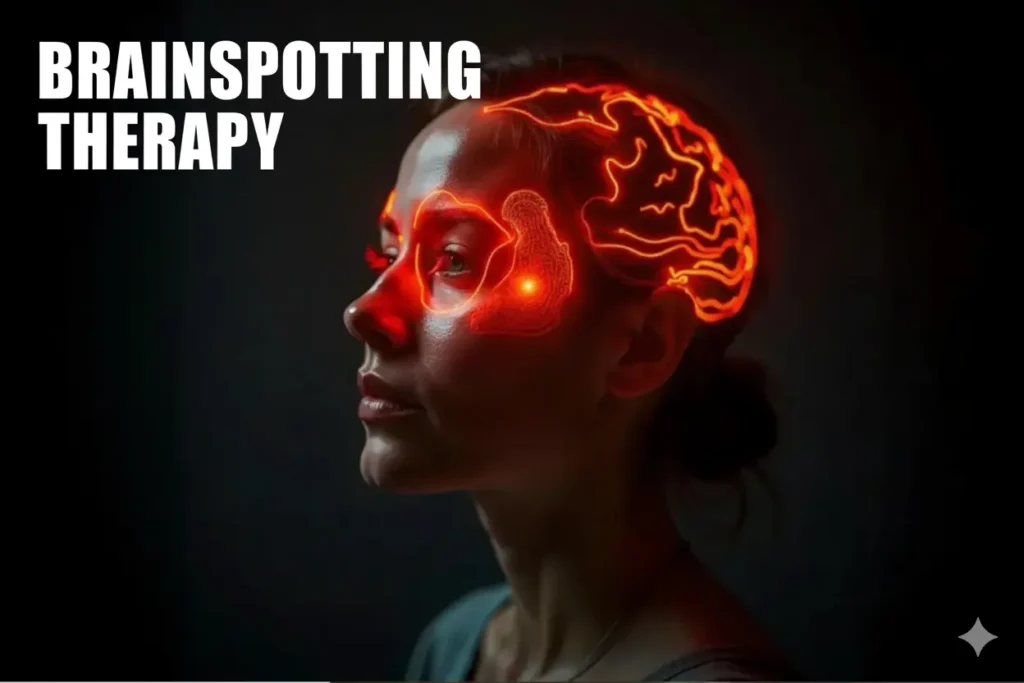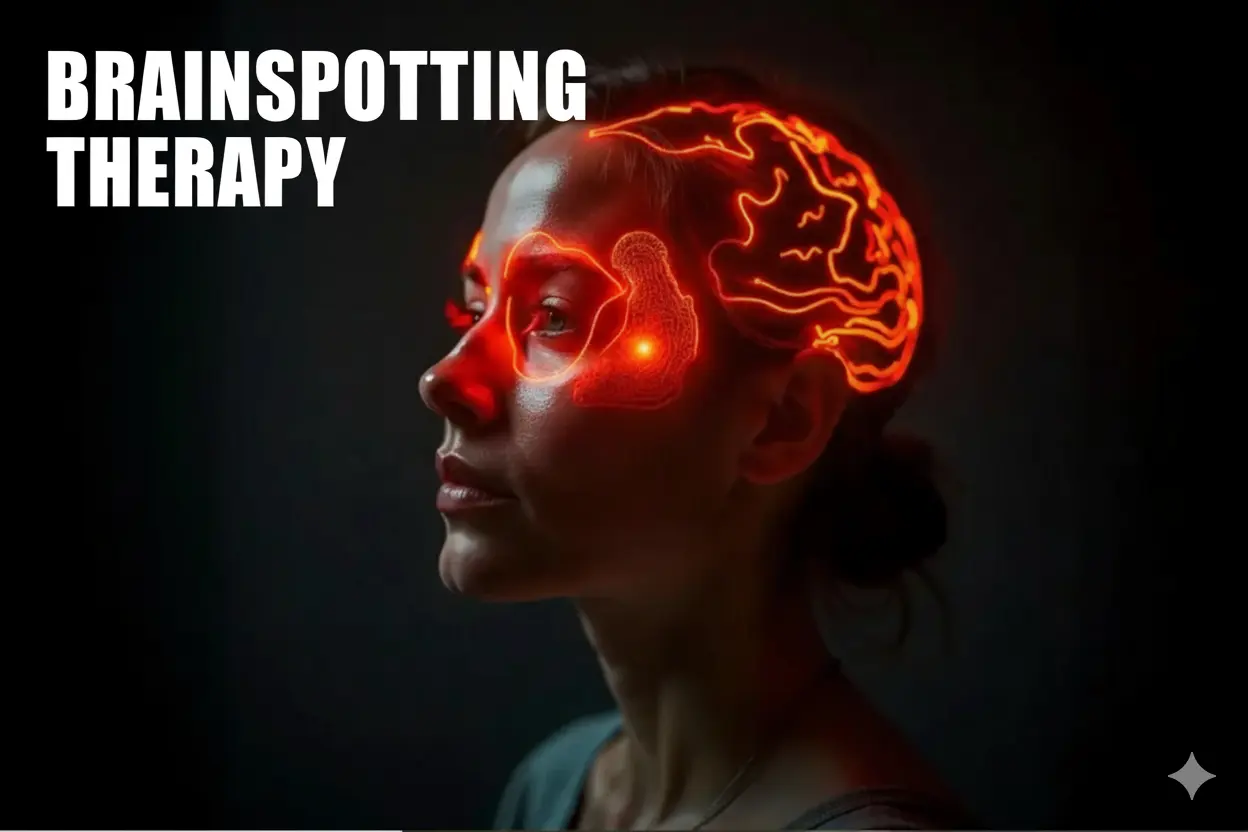
When life hits hard—an accident, emotional pain, loss—sometimes words alone don’t heal the wound. Many people feel stuck, as though part of themselves cannot move on. BPT Navigating Trauma offers a path forward using Brainspotting, a therapy that works with both brain and body to heal what lies beneath. In this article, we will explore what Brainspotting is, why it helps, how sessions work, the benefits, and who can gain from it. If you’re considering healing, this will show how BPT navigating trauma might help you.
What Is Brainspotting Therapy?
Brainspotting (BSP or BPT) is a therapy method discovered by Dr. David Grand in 2003. It is built on the idea that trauma isn’t just stored in thoughts or memories, but also in eye positions, in the body, and in somatic signals. As modern world technology advances, therapies like BPT gain recognition for combining neuroscience with healing. When a person focuses their eyes on specific visual spots (brainspots), it can help access deep emotional material locked in the brainstem, amygdala, and other subcortical regions. In bpt navigating trauma, the therapist helps the client find that brainspot—often identified by noticing when physical sensations or emotions intensify.
Why Use BPT to Navigate Trauma?
Trauma changes more than our minds—it changes our bodies, our nervous system, our sense of safety. Many people with PTSD or other trauma don’t just suffer flashbacks; they suffer daily anxiety, physical tension, unexplained aches, or emotional shutdown. bpt navigating trauma aims to heal at that deep level. Research shows that Brainspotting can reduce PTSD, anxiety, depression, chronic pain and improve sleep. Because the process uses body awareness and focuses on eye positions, it can reach trauma that simple talk may bypass. When trauma is stored in subcortical brain areas, verbal recollection is limited. Brainspotting helps bring those areas into healing.
How Does a Brainspotting Session Work?
Understanding what happens in a typical Brainspotting session helps reduce fear and allows you to go in prepared. The process of bpt navigating trauma generally includes:
Step 1: Settling in and Safety Check
The therapist asks about what issue you want to focus on and helps you feel grounded.
Step 2: Noticing Distress
You identify where in your body you feel strong tension or emotion.
Step 3: Eye Scanning
You or the therapist guide your eyes to find the brainspot, where emotions intensify.
Step 4: Holding Awareness
You maintain gaze, noticing emotions, sensations, or memories without forcing.
Step 5: Release and Integration
The brain reprocesses trauma, old patterns soften, and relief appears.
Step 6: Closing the Session
The therapist helps you ground again and plan self-care before leaving.
Sessions are usually 50-90 minutes. Sometimes longer if deeper emotional material arises. bpt navigating trauma is flexible and shaped around your needs.
How Is BPT Different from Regular Talk Therapy?
Regular talk therapy is powerful for discussion, reframing, and understanding. But sometimes trauma is stored deeper than talking can touch. bpt navigating trauma works more through the body and the brainstem, where trauma lives as sensations, images, or eye positions. Unlike therapies that require detailed verbal retelling, Brainspotting allows you to heal without sharing every detail. Emotion and body feedback guide the process. Trauma that feels frozen finds movement. Brainspotting is a bottom-up approach: sensation and body awareness first, then story. Talk therapy is top-down: thoughts first, then feelings. bpt navigating trauma brings both together, offering access where words may not reach.
Who Can Benefit from BPT Navigating Trauma?
bpt navigating trauma can help many groups of people, not just those with diagnosed PTSD. It is useful for individuals with anxiety, depression linked to past events, grief or loss, chronic pain, or performance anxiety. It also benefits those who feel talking makes them worse, or who freeze when recalling trauma. Children, teens, and adults can all benefit when guided by trained therapists. Even small unresolved moments of stress may be helped, because the brain sometimes treats “small traumas” like big ones. The more sessions you do, the deeper the relief usually becomes.
Benefits of BPT Navigating Trauma
People share many positive results after sessions of bpt navigating trauma, including emotional healing and physical relief.
| Benefit | What It Means / Example |
|---|---|
| Reduced PTSD symptoms | Fewer flashbacks, less fear when reminded of trauma |
| Less anxiety and depression | Mood steadier, fewer worries, calmer daily life |
| Relief from physical pain | Tension, headaches, and body aches reduce |
| Better sleep | Nightmares fade, deeper rest improves energy |
| Emotional regulation | Faster recovery after stress, less overwhelm |
| Improved relationships | Safer, calmer, more present with others |
| Boosted creativity | Performance blocks ease, flow returns |
Risks and Considerations
While safe, bpt navigating trauma can sometimes bring up intense emotions or memories. That is normal and part of healing, but professional support is key. Choose a therapist certified in Brainspotting. Prepare for emotional release and take self-care time afterward. Healing may be gradual, so patience is essential. People with severe mental illness or crisis states should consult professionals for a combined treatment approach.
Research and Real-Life Stories
Studies show Brainspotting helps reduce PTSD, anxiety, and depression, sometimes as effectively as EMDR or CBT. Many clients report relief in both emotional and physical symptoms after only a few sessions. Real stories include people who regain sleep after years of nightmares, athletes who break through fear blocks, and survivors who finally feel calm in their body again. These lived experiences show how bpt navigating trauma is both practical and life-changing.

FAQs
Q: How many sessions are needed?
A: Some people feel changes in 1-3 sessions, others need more depending on trauma history.
Q: Is Brainspotting safe?
A: Yes, with a trained therapist. Intense feelings may arise, but you stay supported and safe.
Q: Do I need to share details of my trauma?
A: No. You can process through sensations and awareness without retelling everything.
Q: Can it help with physical pain?
A: Yes. Emotional release often reduces tension, headaches, and chronic pain.
Q: Is it for children?
A: Yes, when done by child-trained therapists, it helps younger people too.
Final Thoughts
Healing from trauma means integrating the past, not erasing it. BPT Navigating trauma offers a way to safely release what is stuck and restore balance between body and mind. It gives space for your brain to process unfinished stories, so you can feel safe, present, and whole again. If you’re interested in trying BPT, connect with a therapist trained in Brainspotting. The support you need to heal could be nearer than you realize.So let me ask you: in what part of your life do you think BPT could make a difference? Drop your thoughts in the comments—I’d love to hear your journey.

